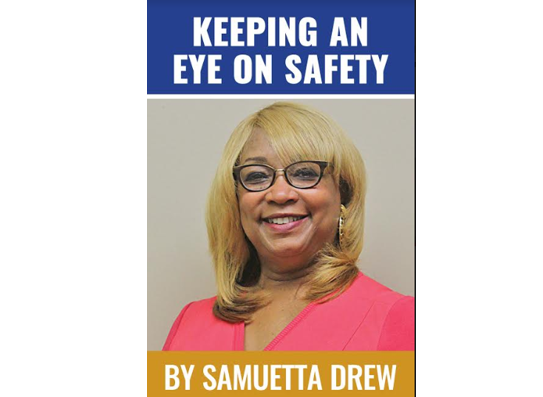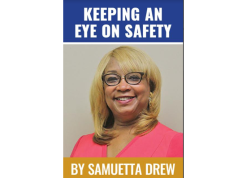By Samuetta Hill Drew
Local and national news can be overwhelming sometimes with daily stories about America’s death tolls and sicknesses resulting from COVID – 19 since March of this year. When you couple this with various cable outlets reporting news stories 24 hours by different pundits, a child of any age can become confused and often frighten. I have heard adults say they needed to take a mental break from watching the news. If it is sometimes overpowering for adults, then think how it must feel to a child of any age. This is why it is crucial as parents you speak with your child to make them feel healthy, secure and safe during this new normal.
It is important for you to watch your child for any signs of stress. The Centers for Disease Control and Prevention (CDC) states that some common changes to watch for include excessive worry or sadness, unhealthy eating or sleeping habits, and difficulty with attention and concentration.
Speaking with your child about the coronavirus pandemic is key. Your conversation should be based upon scientific facts and age appropriate. How you explain the pandemic to a 16-year-old is totally different from how you would to a six-year-old. Use your parental compassion and take this opportunity to help make your child feel more secure.
For middle school and high school age children COVID – 19 can be used as a teachable moment. You can incorporate reading, science, and history along with some mathematics. The children can research the meaning of pandemics and other terms associated with the Coronavirus COVID – 19. They can also research past pandemics and write or talk about their similarities and differences with this one. Their reports provide you an additional chance to speak about COVID – 19 and ease their fears or concerns.
Washing hands and wearing masks can be a family activity. Making masks or decorating them can become an additional teachable moment with smaller children. Drawing patterns, cutting shapes, measuring, etc. can be both fun as well as educational. This activity can also be used for older children as well.
Parents should make sure their child(ren) remain active. This is crucial for the children’s health and safety. Encourage supervised play outdoors. You can ride your bikes together as a family or take family walks. This is great for their mental and physical health.
Maintaining a routine and normal daily schedule is essential for children of all ages. Have consistent bedtimes and get up at the same time Monday through Friday. Structure the day for learning, free time, healthy meals and snacks and physical activity. You may want to check with your child’s school about meal services. Allow flexibility in the schedule. It’s alright to adapt your daily schedule based upon the flow of your day.
The old saying “parents are a child’s first teacher” is really being extended and put into practice now since schools are closed due to the pandemic. Stay in touch with your child’s school to ensure continuous learning. Many schools are offering lessons online (virtual learning). Review assignments from the school, and help your child establish a reasonable pace for completing the work. Your child may require assistance from you with turning on devices, reading instructions, and typing answers.
Communicate any challenges you may have to the school. If you face technology or connectivity issues, or if your child is having a hard time completing assignments, make +6the school aware. Many schools have developed lesson packets to be completed at home.
Keeping an Eye on Safety for your children includes maintaining their physical and mental well-being during these different and difficult times.





